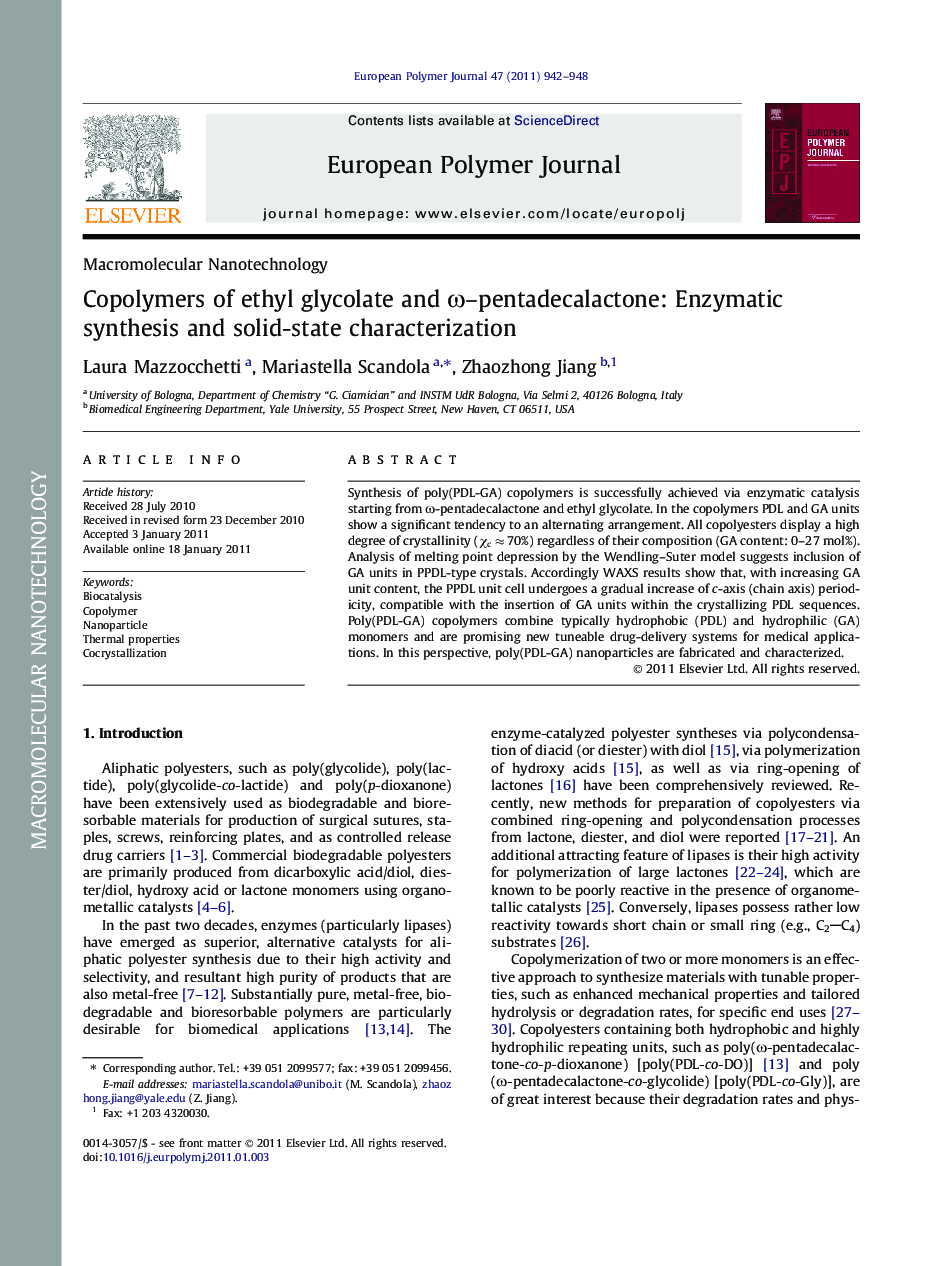| Article ID | Journal | Published Year | Pages | File Type |
|---|---|---|---|---|
| 10609866 | European Polymer Journal | 2011 | 7 Pages |
Abstract
Synthesis of poly(PDL-GA) copolymers is successfully achieved via enzymatic catalysis starting from Ï-pentadecalactone and ethyl glycolate. In the copolymers PDL and GA units show a significant tendency to an alternating arrangement. All copolyesters display a high degree of crystallinity (Ïc â 70%) regardless of their composition (GA content: 0-27 mol%). Analysis of melting point depression by the Wendling-Suter model suggests inclusion of GA units in PPDL-type crystals. Accordingly WAXS results show that, with increasing GA unit content, the PPDL unit cell undergoes a gradual increase of c-axis (chain axis) periodicity, compatible with the insertion of GA units within the crystallizing PDL sequences. Poly(PDL-GA) copolymers combine typically hydrophobic (PDL) and hydrophilic (GA) monomers and are promising new tuneable drug-delivery systems for medical applications. In this perspective, poly(PDL-GA) nanoparticles are fabricated and characterized.
Related Topics
Physical Sciences and Engineering
Chemistry
Organic Chemistry
Authors
Laura Mazzocchetti, Mariastella Scandola, Zhaozhong Jiang,
